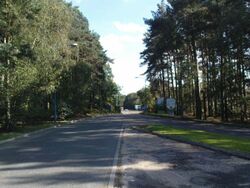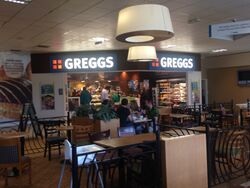Pricing

It's no secret that most services manage to provide the seemingly impossible combination of being both notoriously expensive and notoriously rubbish. This is usually attributed to the fact that services are seen to have a captive market and a monopoly on the motorway, often being the only easily accessible facilities for the next 20 miles.
This will no-doubt play a part in the problem, as will the fact that the large companies that own them need to make a profit. However, this page aims to reveal some of the other little-known factors which contribute to the prices and how you can beat them. We wouldn't go so far as to justify the prices charged: we're just providing information.
As for the quality of services, things do seem to be better than they used to be, but in most cases poor service is absolutely inexcusable. Staff recruitment and retention is a problem across the retail industry, but is especially difficult for service stations which are usually difficult to get to and involve customers who can be especially stressed. This may be one factor behind some of the complaints we see.
The Problems
The Situation
Before we start complaining about the prices of services, we should first work out what we're comparing them to. While the obvious comparison would be a supermarket or High Street shop, a more accurate one would be an airport or railway station - places which are also under fire for their high prices.
The other point which should be considered is that if services were making as much money as some people think they are, there would be more operators and applications for new services.
It's not a new problem either. In 1967 the Minister of Transport argued that the few services at the time could justify their prices due to the nature of their business.
Regulations
The motorway services industry claims to be one of the most highly regulated around. As you'd expect, the regulations are there to stop irresponsible behaviour, but they also appear to stop services from taking advantage of their locations. Examples of this include:
- In the 1990s, Granada expanded many of their services and introduced a whole host of shops, so a limit was put on the size of shopping areas and what they can sell.
- Many services reduced operating costs by building a bridge between their two sites. Bridges have since been banned from all new services.
- Newer services tried to save money by building a single site at a junction. The Highways Agency have since said that such designs are to be avoided.
- Some services have tried to expand by providing facilities for local people, this has since been banned.
All of these regulations were put in for good reason, to stop services cutting corners or failing to meet their main purpose, but in doing so this also reduces their cash flow.
The most obvious example of the regulations is with advertising. There is a blanket ban on services, although this has been loosened over time.
The Expenses

People often ask why services in other countries can afford to be cheaper, and the answer appears to be in the way they are run. In the UK, all the ancillary works relating to a new service area must be funded by the developer, whereas in most of Europe the equivalent of the Highways Agency will often have agreed on the need for the plans and agreed to support them.
In many countries it's common for the roads authority to run the whole complex but lease out the building to a catering company. In the UK, the whole facility - including the slip roads, car park and picnic tables - are funded and ran by the operator. This includes any repairs to the sliproads (or not, which is what seems to happen), plus the costs of lighting up a large building, car park and petrol station even though there may not be any customers in the middle of the night. Even the costs of repairing the signs on the motorway must be met by them.
The other big difference between services in the UK and in mainland Europe is the size. As the UK's motorway network is one of the busiest, and has services at much more infrequent intervals than in some countries, their services need to be much larger to compensate. This pushes up both the cost of building a new service area (which is estimated to be in the region of £40million) and the cost of running the facility at quieter times when there are few customers.
Many services have worked out they can increase their sales by franchising. This means the operator can run a branch of Costa and set their own prices, but the price paid by the customer will be split between revenue for the operator and revenue for Costa.
Frugal Customers
It's clear that most users of service stations visit with no intention of spending any money - ironically because they think they're too expensive. This is understandable, but it creates the vicious circle where the services need to increase their prices to compensate for people not buying things as the prices are too high.
In an attempt to tackle this, many services have spent several years finding brands which are most likely to gain customer approval, provide a good value service and encourage customers to part with their cash. McDonald's and M&S Simply Food are two successful examples of this, but there are many more, including WHSmith and Starbucks.
Making the Most of a Bad Situation

Some people will go to great lengths to avoid spending money at a service area, from packing their own food to even heading down unknown a-roads in a desperate bid to find fuel. For many people this isn't practical, so they may instead prefer to head for the fast food chain for lunch or just WHSmith in order to find enough snacks to keep them going until the next stop.
It's also possible to get discounts on the prices at service areas. When you pay for parking you will often get the choice of paying £2 extra for a meal voucher, and there are a few other ways you can save which are outlined in the further reading section below.
Coach and HGV drivers often have no choice but to use a motorway service area, so the operators often provide special discounts to attract them to their facility in particular: these are detailed on the Professional Drivers page.
It's also possible to find vouchers for services on various websites.
Further Reading
- Moto
- Prices - a list of the "best value deals" at their services.
- The Moto App - Moto offer two "daily deals" to app holders
- The AA Members' Club - get a little-publicised 20% discount when you show your card at Moto services.
- Why do prices at Motorway Service Areas sometimes seem so high? - as the ones who charge the prices, sure enough Moto have an excuse ready.
- @motoway on Twitter - Moto run promotions and competitions on Twitter
- Welcome Break
- Latest Offers - Welcome Break's list of some of their offers.
- FAQs - Welcome Break's FAQ page, which tackles their prices.
- @welcomebreak on Twitter - Welcome Break run promotions and competitions on Twitter
- Roadchef
- Offers - Roadchef's offers page. They frequently email 20% off vouchers out.
- Off the Motorway - A site guiding you to mostly independent alternatives.
- Just off Junction - A site listing a variety of locations near the motorway, including petrol stations and supermarkets